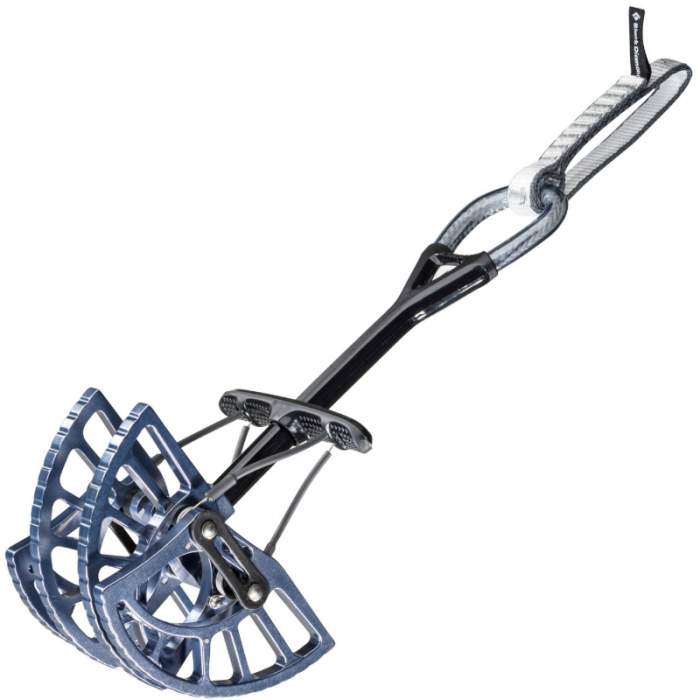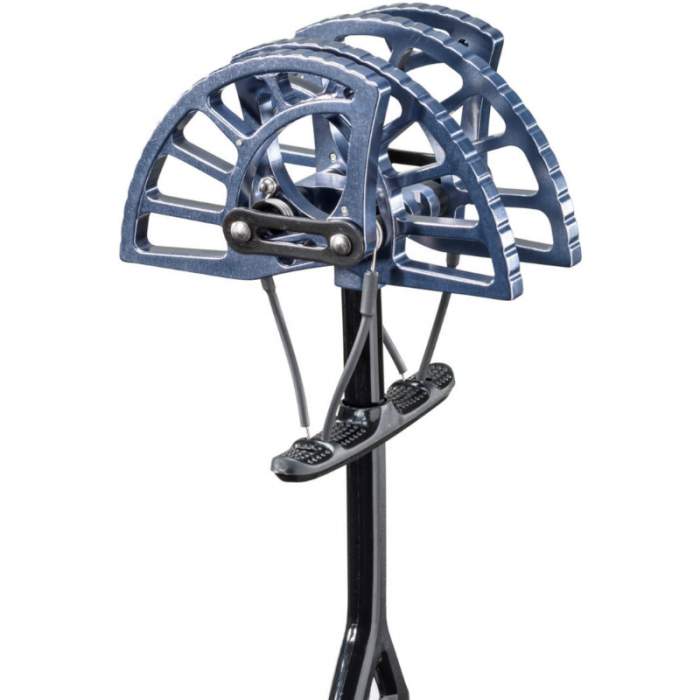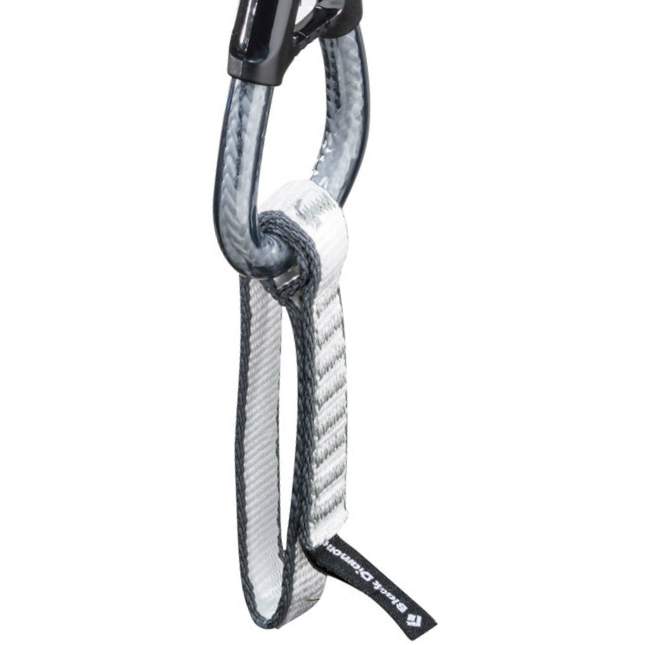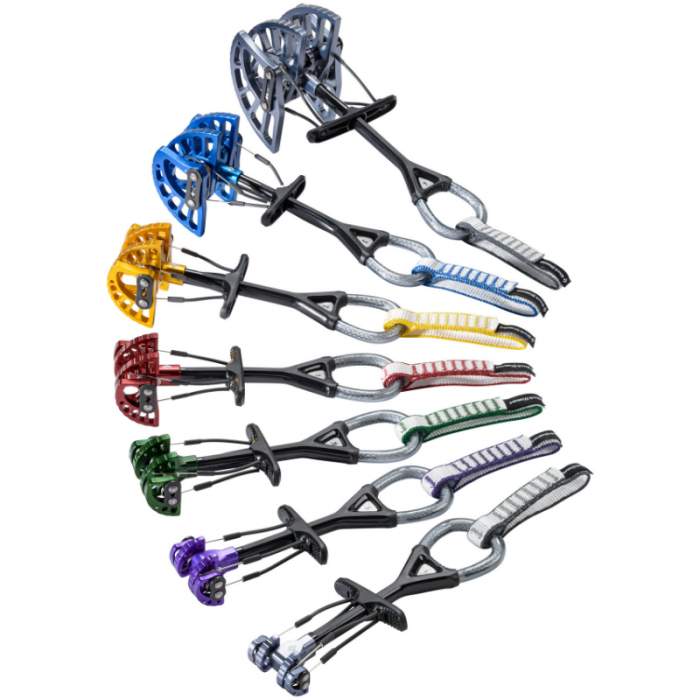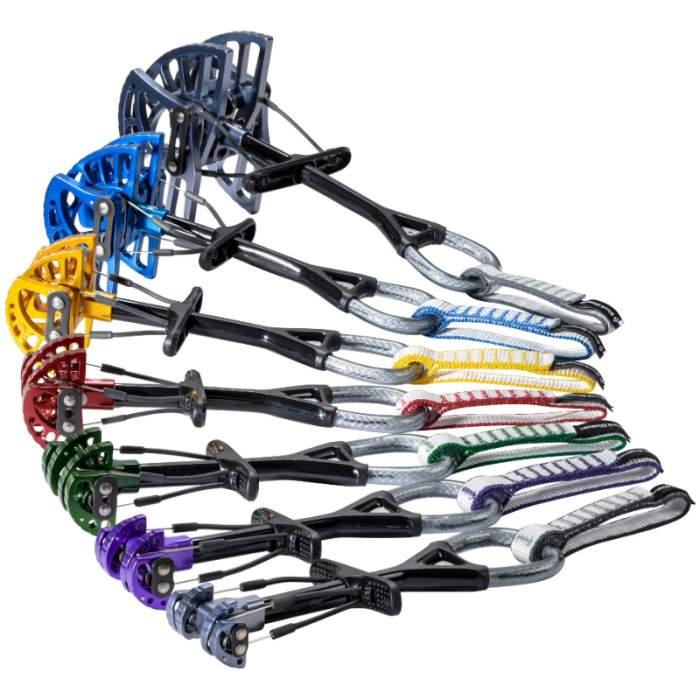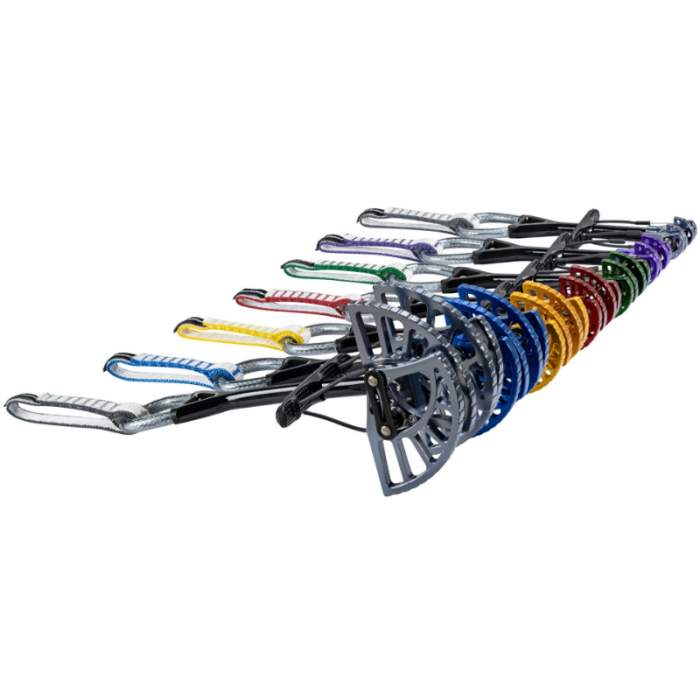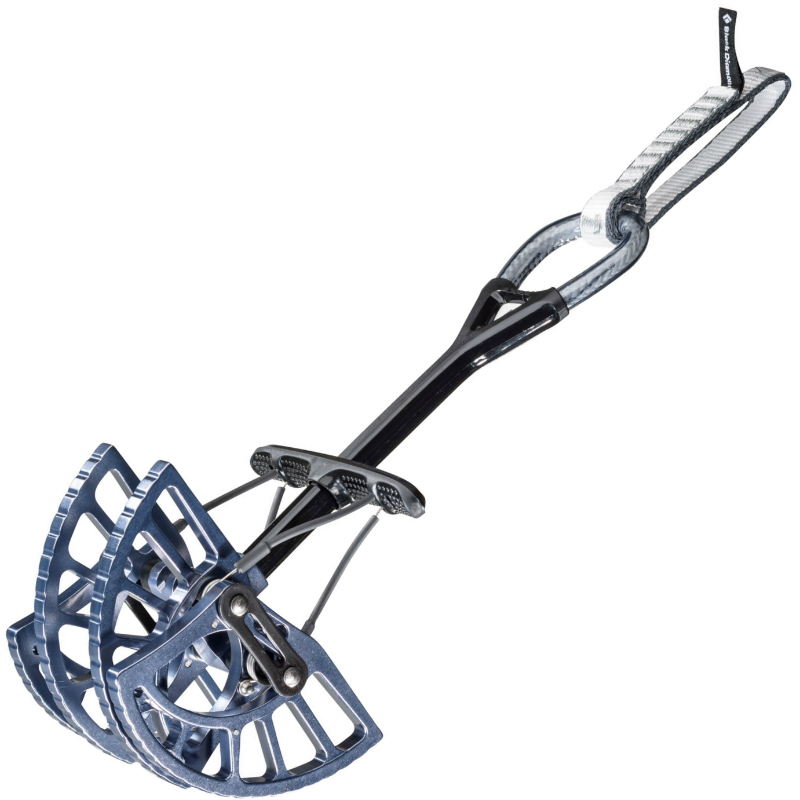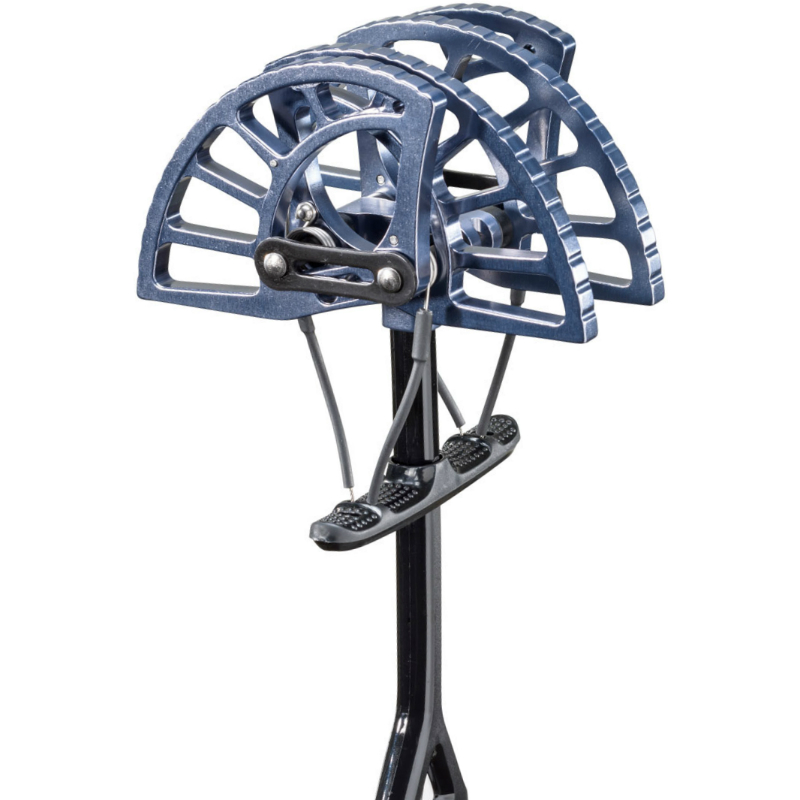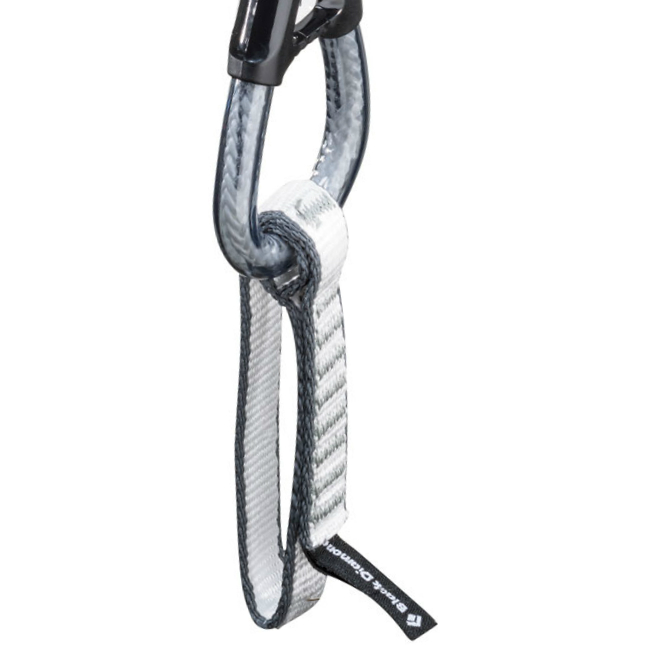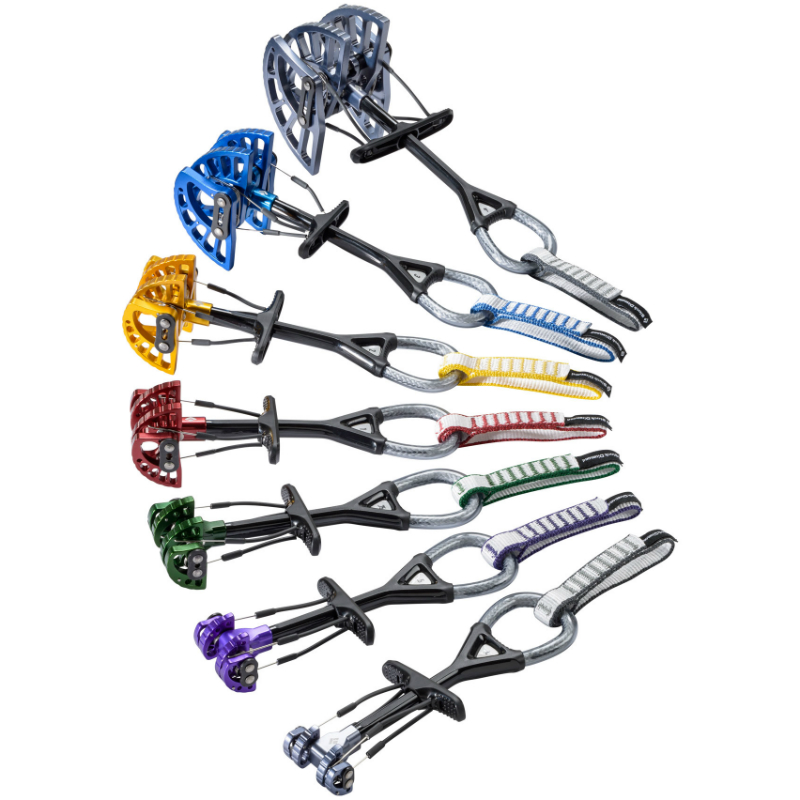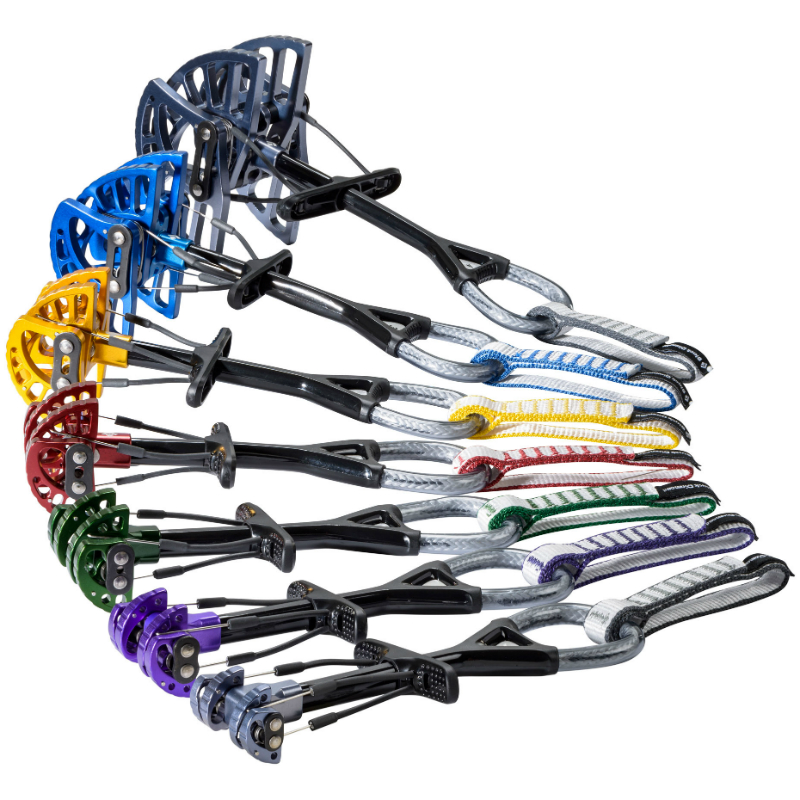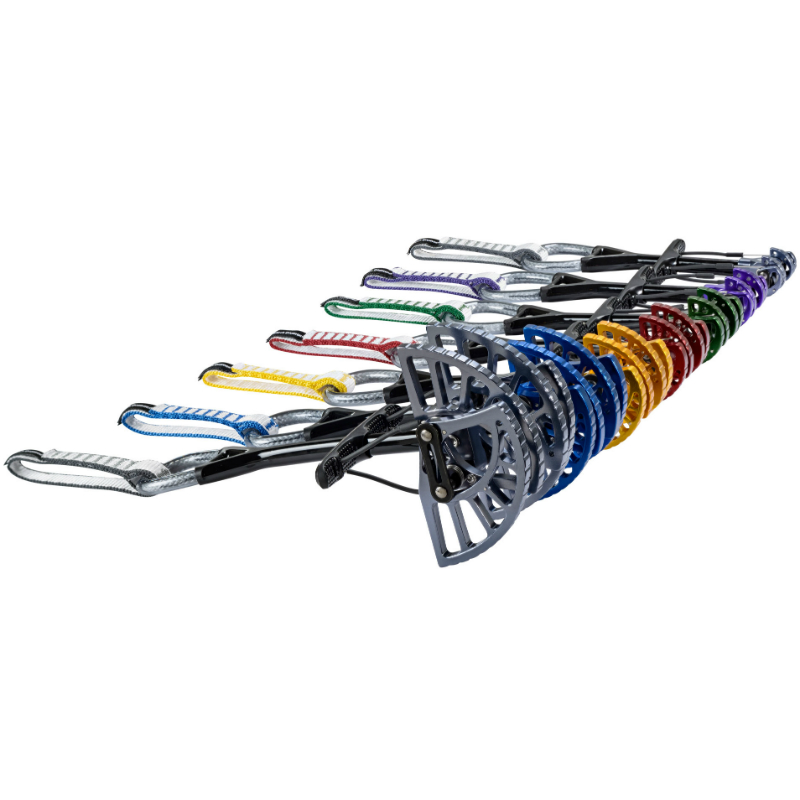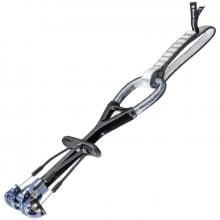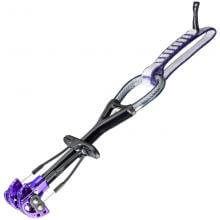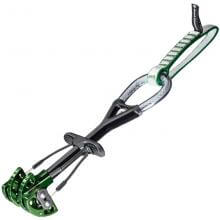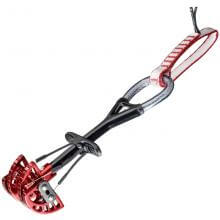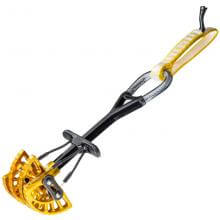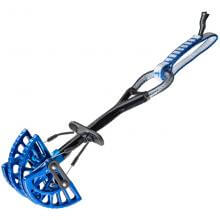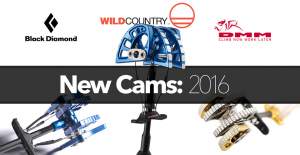Camalots are designed to provide protection across the full spectrum of crack sizes, from small incipient seams, to perfect hands, to full-on offwidths. Camalots, Camalot C3s, Camalot X4s and Camalot Ultralights each have their own unique advantages, and a well-rounded rack will likely contain some or all sizes of each cam. Check out the chart to see how the members of the Camalot family overlap.
Camalot Ultralight 4
Description
On fast-and-light missions and smash-and-grab ascents when weight really matters, the Black Diamond Camalot Ultralight presents a 25% weight savings over the Camalot. With sculpted lobes that account for a portion of the weight savings, the Camalot Ultralight features a dyneema cord in place of a cable with all of the same strength you rely on. A double-axle design allows for the widest placement range possible for each cam device, and color coding makes for easy identification when quick pro is paramount. When light is right, the Camalot Ultralight is essential.
Double-axle design offers widest range for each cam unit.
Dyneema core stem design is strong, durable and low-profile.
14mm dyneema tape sling.
Ergonomically optimized stem and thumb loop for surgically precision placements.
Color-coded for easy identification and wide range of sizes.
Retail price
When you click a link below and then checkout online, no matter what you buy (climbing gear or not), we get a small commission that helps us keep this site up-to-date. Thanks!







Weight (g / oz)  Weight (g / oz)In grams and ounces, the weight, as stated by the manufacturer/brand. | 225.0 g / 7.94 oz |
| Cam Head | 4 lobes, double axle |
| Offset | No offset |
| Stem | Flexible single stem |
| Sling | x14 mm Dyneema (single sling loop) |
| Camming Angle | |
| Active Strength | 12 kN |
Cam Range (mm / in)  Cam Range (mm / in)In millimeters and inches, the maximum dimensions of the cam lobes when shut tight and fully extended. Since the "usable" range is so debatable, all manufacturers now list the full dimensions to avoid selling themselves short. For offset cams, we'll list the max dimensions possible and then afterwards list each of lobe dimensions. | 66.0 - 114.7 mm (2.60 - 4.51 in) |
| Materials | |
| Certification | CE, UIAA |
No reviews yet.
The Black Diamond Camalot Ultralights are the lightest double axle cam on the market and cut 25% weight from their popular C4 predecessors. A spacious, featured thumb loop and wide trigger bar make them easy to place and remove. The traditional metal cable stem is replaced with lightweight Dyneema while other elements of the cam have been pared down to shed grams. With those weight savings come some concern about durability and a 10 year lifespan for the cam along with a stiffer stem and sling that caused them to be less stable than other double axle cams tested.
If you can pony up the extra dough for a rack of ultralights, do it! These Black Diamond C4 Ultralight are everything we love about the C4s, at 75% of the weight, bringing big smiles to our faces everytime we rack the #4. The price may shy away some, but we so many shiny racks of brand new Camalot Ultralights at Indian Creek this fall. The people have spoken, and the future is looking lighter.
The weight reduction of the Black Diamond Ultralight Camalots is noticeable and appreciated on alpine climbs, especially when a long approach is involved. This is especially true for the larger sizes where the weight savings become even more substantial. Whether the weight savings is worth the extra cost per cam is a decision you may need to make for yourself: if you need a couple pieces for alpine climbing (particularly the #4, which doesn’t have a competing ultralight cam on the market) and money is no object, the Camalot Ultralights bring all the things climbers have embraced about the C4s into a leaner, lighter package.
For most sizes, the Metolius Ultralight Mastercams provide a more durable, much cheaper lightweight alternative. For cragging and most climbing without a long approach, the standard C4s offer the same features and familiar sizes at a much lower price point. So with all that said, I plan on keeping my rack of C4’s for the majority of my climbing, but will continue to take the Ultralights out for those longer missions a long way from the road.
In summary, the BD Ultralights are great for instantly improving your power-to-weight ratio, hauling up big walls and reducing load on long approaches or in the alpine; they are easy to identify with their standardized colors and easy to plug with their thumb loops and wide finger triggers. They do cost approximately $20-$40 more than equivalent cams from other brands, but if cutting weight is your goal, these babies are your pick.
The feel is noticeably lighter for the larger sizes, and otherwise identical in terms of trigger and placement. Very solid, very satisfying, very safe. So here's the thing: unless you have extra money and/or a real need for weight savings on your rack, you can stick with the regular Camalots and save a lot of money and/or buy more cams. To put it in perspective, if your rack had one of each of the seven sizes it would cost about $500 for a rack of regular Camalots (total weight about 38 ounces) and $700 for a rack of the Ultralights (total weight about 30 ounces). You can save eight ounces or $200, or you can buy two or three more cams for the same amount of money. Again, both models are friggin' awesome, just do the math and make good choices!
In two decades of climbing, I’ve never coveted a piece of gear as much as the Camalot Ultralight. A standard component on a climbers’ gear rack, sling-loaded camming devices (SLCDs) are placed in cracks to protect lead climbers as they ascend rock faces. Climbers carry many of them on long routes to stay safe, so light weight is key to moving faster and more efficiently.
The Ultralights may not be quite as long lasting as the standard models depending on how rough you are with your gear, but for fast and light ascents I am sure a lot of people will be happy with that. They are also more expensive, but again you might feel that is a price worth paying. I certainly guarantee you won't be disappointed if you do choose them - they are light on your harness, light in your hand, have a great expansion range per piece and have what, as mentioned above, l reckon to be the smoothest trigger action out there. If you are in line for some new cams do have a look at Peak Mountaineering Top Gear choice #19 - Black Diamond Ultralight Camalots.
The best camming device ever made. I already want to get a double set of these, and I want my friends to as well. That said, I hope they expand and make Ultralight versions of the #5 and #6, the sizes where you often don’t haul them up a climb because they’re so heavy. Put them on your holiday gift list right now, or get one for someone you love!
For the last few years, the much-loved Camalot C4 has set the standard for modern spring-loaded camming devices, with snappy trigger action, a great placement range, and top-notch durability. The new Ultralights are all that with about 25% less weight for the whole set from .4 to #4. “Now that I know how light a cam can be, I don’t know if I can go back,” said one tester who plugged them from Eldo to Smith Rock to Indian Creek. In order to cut ounces, designers selectively removed metal from the lobes and replaced the wired thumb loop with Dyneema. The result is a featherweight cam with only a mild sacrifice in strength—each cam is rated about 2kN less than its full-weight counterpart, but that leaves it plenty strong for both free and aid climbing. Alpine testers appreciated the weight savings for big days, and moderate tradsters were able to take all the cams they needed for peace of mind without being weighed down. The savings are most apparent in the larger sizes where there were more spots for metal removal. A .4 saves about 22 grams (.78 oz.), but a #4 saves the equivalent of an entire .4 cam (2.2 oz.). They are quite a bit pricier, but you get what you pay for.
How to use, storage, care and maintenance with instructional pictures.
The UIAA equipment standard provides a baseline for equipment performance in a test lab under controlled conditions on new equipment. Although these test conditions are relevant to the conditions encountered climbing, conditions encountered at the crags and the condition of the equipment are equally important. This recommendation from the UIAA member federation The British Mountaineering Council (BMC) provides vital equipment information that is NOT explicitly addressed in the standard, particularly failure modes of the equipment and recommendations for the use, inspection, maintenance, and retirement of equipment.
A pictoral representation of the UIAA-125 and EN-12276 standards for frictional anchors (which includes SLCD's [cams] and Ballnuts).

